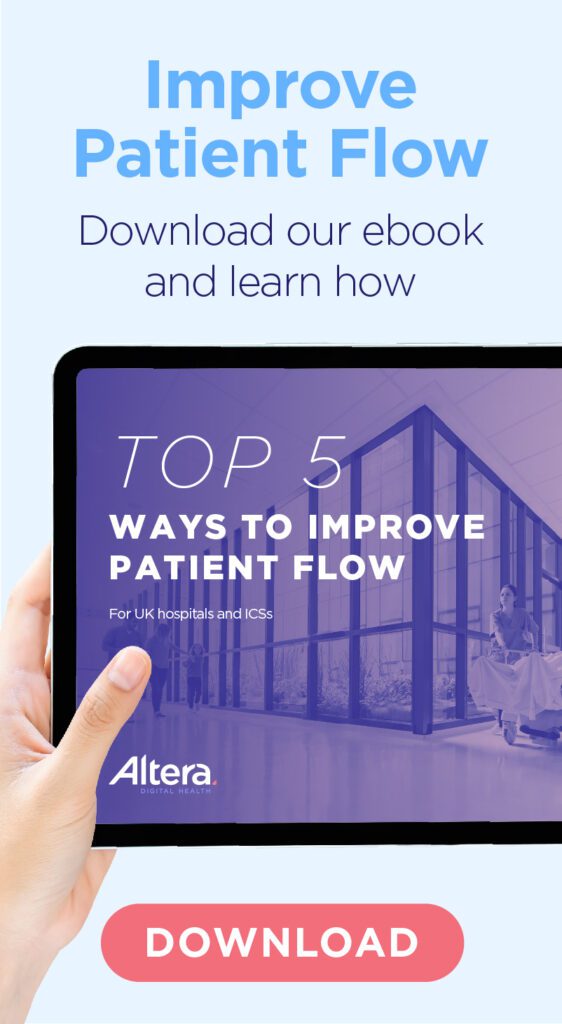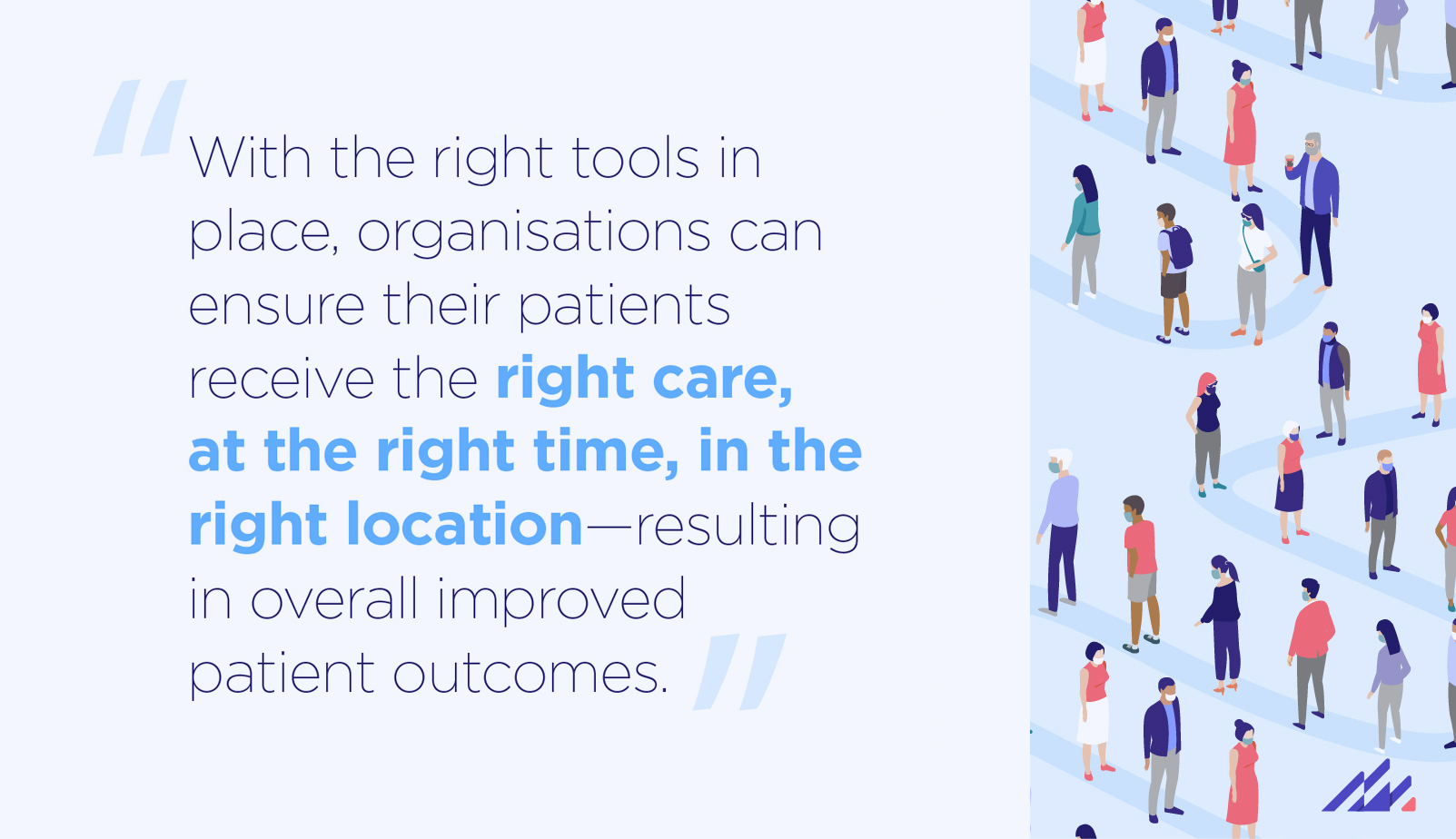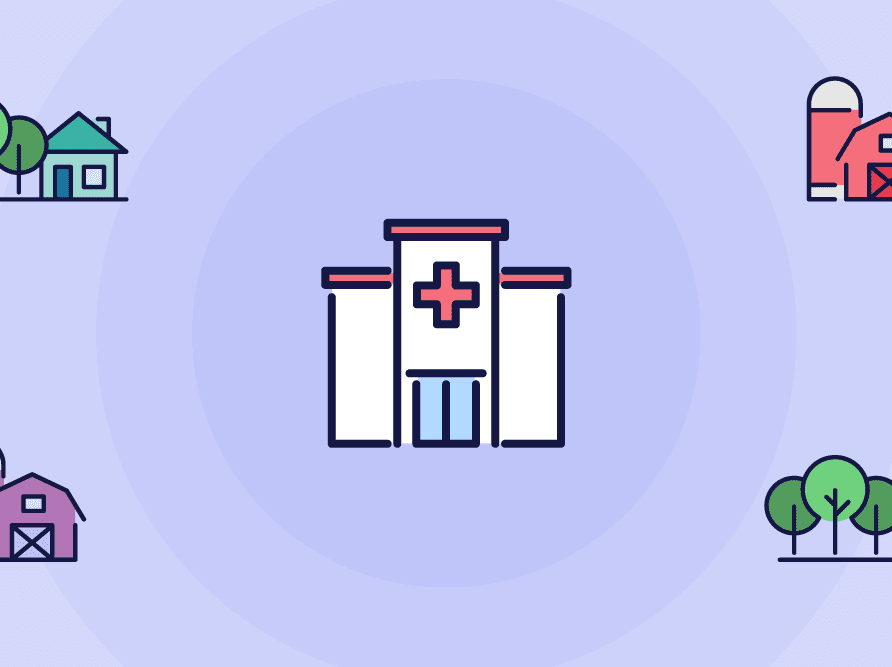Article
The NHS in crisis – How you can find your empty beds and maximise flow from ED to discharge and beyond
Hospital capacities have reached a crisis point. New data released by NHS England shows the worst ever set of emergency care figures since modern records began in 2004.
The issues of delayed transfers of care and poor patient flow are a reality for every hospital. Healthcare leaders are realising the extent of the pressures facing the health service that people working in the profession have known for quite some time.
Even before COVID-19, many hospitals in the UK were stretched thin with sick patients on trolleys in corridors waiting to see a doctor, outside in ambulances or in beds waiting to be discharged to a suitable care setting after their treatment. All of this, on top of overall delays in the Emergency Department, has created significant bottlenecks.
The NHS is facing winter pressures like never before. These pressures aren’t unique and when combined with high incidences of seasonable illnesses like flu, as well as with the backlog of patients waiting for treatment due to COVID-19, it means the NHS is creaking at the seams.
Altera Digital Health experts, committed to partnering with our clients to bring next-level healthcare within reach, have identified five ways hospitals can improve patient flow and tackle the ongoing surges in demand for care, central to elective recovery plans.
1. Optimise patient access and bed management – Streamline patient transitions through the continuum of care
Even prior to the pandemic, patients experienced long waits to receive appropriate care, delivered in the proper location. These less-than-ideal care settings also increase the risk of infectious disease transmission. When compounding this scenario with an influx of elective procedures post-COVID-19, it’s imperative to have optimal patient access and bed management in place.
How can you optimise patient access and bed management?
Many organisations across the UK have effectively prevented overcrowding problems by implementing a single comprehensive patient flow solution that encompasses bed management as a key functionality. When full visibility to transfer and discharge activities across the care continuum is enabled, fast and accurate patient placement becomes a possibility. Having real-time insight into bed status, bed availability and patient movement at clinicians’ fingertips is essential, especially during demand peaks.
2. Eliminate housekeeping inefficiencies – Track and monitor work routines in real time
Organisations must find effective ways to move away from manually updating housekeeping statuses and work requests to prevent bed gridlock.
 How can your organisation more effectively manage hospital housekeeping operations?
How can your organisation more effectively manage hospital housekeeping operations?
Housekeeping operations can be optimised by automating the planning, assigning, and tracking of housekeeping activities. This includes the dispatching process, communication of dirty beds (including real-time displays), intelligent alerts and escalations. With automation, all key staff members are universally informed of bed-cleaning requests and job statuses.
With housekeeping operations automated, and data available for all staff members, the hospital environment remains clean, comfortable and safe by reducing chances of allocating a bed to the next patient before it is cleaned.
3. Effectively manage the porter pool – Streamline inefficient transport processes
The healthcare industry has undergone a rapid and widespread shift to implementing mobile solutions, especially because of the COVID-19 pandemic. Sunnybrook Health Sciences Centre in Canada uses mobile devices within transport operations and reports saving 40 hours per month in transport time by doing so. Additionally, one of the most significant transitions was moving away from using pagers and bleeps, resulting in substantial operational cost savings.
4. Harness the power of predictive analytics – Lean on data for proactive decision-making
Retrospective analytics has its place, but real-time predictive analytics provides real-time data, enabling real-time impact. From an operational perspective, this means actionable staffing-level decisions can be made based on history and predicted demand. When staffing decisions are aligned with demand, a foundation for improved patient access is created.
How does predictive analytics affect your organisation?
Powerful predictive analytics optimises capacity planning and discharge forecasting. Additionally, this data can integrate into any existing Command Centre. These predictive analytics components include a full Census Dashboard, Enterprise Dashboard, Proactive Workforce Management, Discharge Management, OR Performance and Scorecards.

5. Deploy a single, integrated patient flow solution – Bring Bed Management, Transport and Housekeeping, and Analytics together with one solution
Managing constrained resources is one of the greatest operational challenges faced by healthcare organisations. Consequently, patients experience longer wait times and receive care in unconventional locations. Using technology to efficiently manage beds, housekeeping tasks and porters can prevent “corridor medicine” problems that have historically plagued UK hospitals.
As your health system tackles the latest surges in demand for care, take steps now to reduce the return of “hallway healthcare.” Leverage a complete solution that integrates all aspects of patient flow, ensuring communication, efficiency and patient throughput are maximised.
We believe that every hospital needs a patient flow solution to support a proactive approach to the challenges faced. With the right tools in place, organisations can ensure their patients receive the right care, at the right time, in the right location—resulting in overall improved patient outcomes.
Learn more about Altera Patient Flow™ with Census Logic here.













